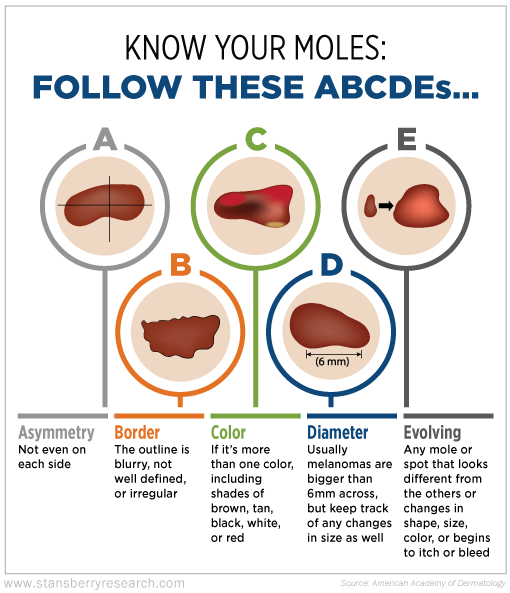Doctors drive me nuts...
You read that right. And yes, I am saying that as a doctor.
After about a decade on Wall Street, I went to medical school. I took on a grueling fellowship in molecular biology at Duke University and had my work published in one of the premier journals in my field, Ophthalmology.
My father was a doctor. Many of the most important people in my life are doctors. Dedicating your life to helping the sick and injured is a noble calling.
But never forget – the medical industry is still a business. And many doctors are making bank by overprescribing tests. Remember, every test a doctor orders is another paycheck in his pocket from the insurance company.
Doctors know they're doing this... In a 2011 survey, 28% of doctors admitted they treat patients too aggressively. Only 6% think their patients don't receive enough medical care.
A 2010 University of Washington study published in the Journal of the American College of Radiology concluded that out of 459 CT and MRI scans it reviewed, 26% were unnecessary. In just that sample, 118 tests wasted money and time – and exposed patients to radiation for no reason.
As a med student, I started questioning which tests are necessary and in what cases. And one that I find worthwhile is skin cancer screening.
More than 9,500 folks in the U.S. are diagnosed with skin cancer each day according to the American Academy of Dermatology.
Skin cancer looks like a slightly strange mole. In fact, some non-harmful "benign" moles can turn cancerous. There are ways to tell potentially cancerous moles from benign ones...
Cancerous moles are asymmetrical, have irregular borders or uneven color, and change in size or appearance.
But the only way to definitively identify whether a mole is cancerous is through monitoring and screening.
The three main types of skin cancer are basal-cell skin cancer (the most common), melanoma, and squamous-cell skin cancer.
Basal-cell skin cancer appears on the face and other areas that have regular sun exposure. Melanoma occurs anywhere on the skin's surface. It can even occur on the eye and in the intestines.
Both basal-cell skin cancer and melanoma are more common among white people than folks from other races. Squamous-cell skin cancer is the most common type of skin cancer in other races, and it usually appears on legs and feet. For white people, squamous-cell skin cancer appears on the head, face, ears, and neck.
Melanoma is the most dangerous of the three... Rather than staying on the surface, it grows deep into your skin, worsening its spread to other parts of the body. But folks who have a melanoma removed before it spreads have a 98% chance of surviving for at least five years.
Years ago, I spotted a melanoma on my business partner and urged him to get it checked out. I also spotted a squamous-cell cancer on his wife's eyelid. Luckily, they listened to me and went for cancer screening. Both of them caught their cancers early – while they were still shallow – and had them successfully removed. If they had ignored the warning signs for much longer, their cancers could have cost them their lives.
One in every five people in the U.S. will develop some form of skin cancer by the age of 70. The good news is that most skin cancers aren't that dangerous, especially when caught early. That's why folks with a history of melanoma in the family should visit a dermatologist once a year for a full body scan.
Outside of your regular checkups – and if melanoma doesn't run in your family – use the "ABCDE" warning signs to determine whether a dermatologist should look at an abnormal skin mark.
- A = Asymmetrical
- B = Border is uneven
- C = Color changes
- D = Diameter is a quarter-inch or larger, about the size of a pencil eraser. Also, these are darker than other moles.
- E = Evolving by changing shape, size, or color

Have a partner check your body for questionable marks and take a picture of any that seem suspicious. These potentially dangerous marks could appear anywhere on the skin. They don't mean you have cancer, but if you develop any of these ABCDE signals, it's time for a professional to take a look.
Your dermatologist will create a map of the moles and marks on your body and monitor it every year, especially if you're someone with a lot of skin spots and a family history of skin cancer. If your dermatologist detects something that looks abnormal, a biopsy – or a less invasive DermTech Smart Sticker test – can determine whether it's malignant (meaning cancerous) or benign (harmless).
Of course, I'm not only a doctor...
Before medical school, I spent more than a decade on Wall Street working for some of its top investment banks, like Goldman Sachs.
And earlier this morning, I went public with the most exciting research of my more than 40-year career.
It's a situation that combines the low risk of investing in the world's very best blue-chip stocks... and the upside potential of getting near the very beginning of a massive technological breakthrough.
It's the culmination of the various careers I've had to help you live the ultimate rich retirement.
If you missed this morning's presentation, click here to catch up on all the details.
What We're Reading...
- A new way to detect skin cancer.
- Something else: Why don't woodpeckers get brain damage.
Here's to our health, wealth, and a great retirement,
Dr. David Eifrig and the Health & Wealth Bulletin Research Team
July 19, 2022
